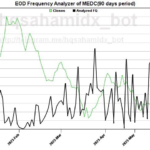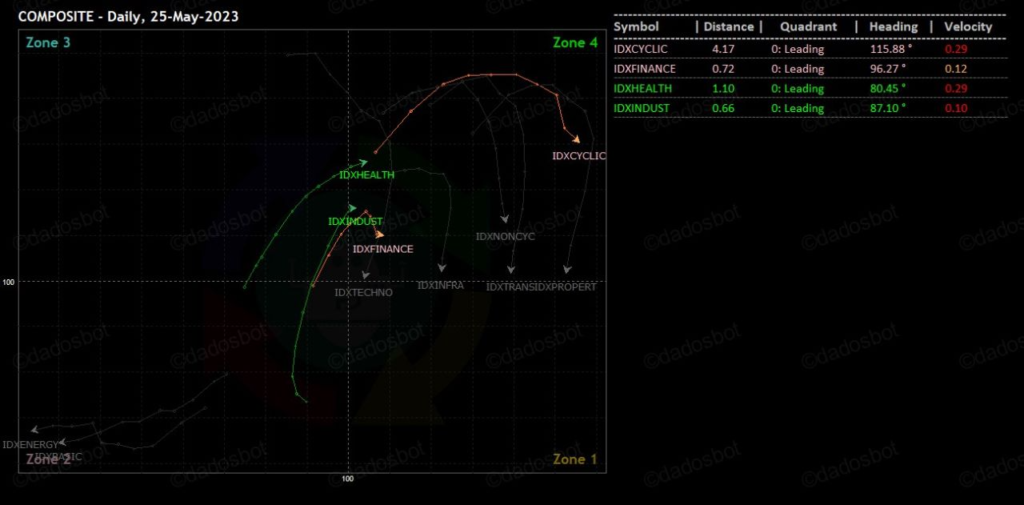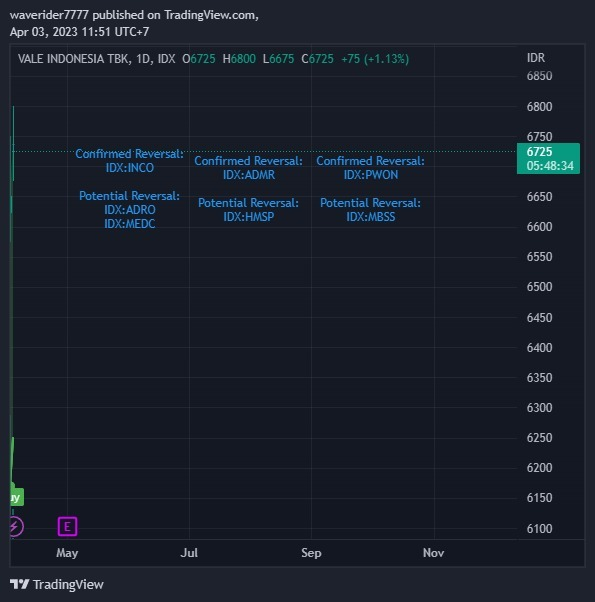Daily Analysis 20230526

May 26th, 2023
Good morning,
The Nasdaq Composite
surged 1.7% in Thursday’s session after stronger-than-expected revenue guidance and an earnings beat from Nvidia
fueled a rally in semiconductor and artificial intelligence stocks as well as other technology names. Nvidia shares jumped 24.4% in the session to finish at an all-time high.
Dow……32735 -35.3 -0.11%
Nasdaq12698 *+213.9* +1.71%
S&P 500.4151 +36.04 +0.88%
FTSE…..7571 -56.2 -0.74%
Dax……15794 -48.3 -0.31%
CAC……7229 -24.2 -0.33%
Nikkei…..30801 +118.5 +0.39%
HSI………18747 -369.01 -1.93%
Shanghai.3201 -3.5 -0.11%
IDX…..6704.23 -6.66 -0.70%
LQ45….941.83 -6.66 -0.70%
IDX30…490.21 -3.52 -0.71%
IDXEnergy…1773.97 -35.61 -1.97%
IDX BscMat 1008.47 -13.19 -1.29%
IDX Indstrl…1168.20 -17.65 -1.49%
IDXNONCYC.741.58 +0.41 +0.06%
IDX Hlthcare1478.30 -19.29 -1.29%
IDXCYCLIC…865.99 +2.96 +0.34%.
IDX Techno..4694.88 -65.75 -1.38%
IDX Transp..1854.34 +25.51 +1.39%
IDX Infrast…..824.01 +2.18 +0.27%
IDX Finance.1381.07 -0.97 -0.07%
IDX Banking.1158.97+3.19 +0.28%
IDX Property…..728 +2.90 +0.40%
*Indo10Yr.6.5440 -0.0096 -0.15%👍*
*ICBI..361.7032 +0.2186+0.06%👍*
*US2Yr.4.3230 +0.2030 +4.68%‼️*
*US5Yr 3.9180 +0.1010 +2.65%*
*US10Yr3.8190 +0.0760 +2.03%*
*US30Yr.3.9930*+0.0100 +0.25%
*VIX……19.14 -0.89 -4.44%*
*USDIndx104.2510‼️ +0.3640 +0.35%*
Como Indx.258.49 -4.21 -1.60%
(Core Commodity CRB)
BCOMIN……140.48 +1.10 +0.79%
*IndoCDS.90.13👍* -0.98 -1.08.%
(5-yr INOCD5) *(24/05)*
*IDR…..14953.00‼️ +53.00 +0.36%*
*Jisdor.14952.00‼️ +47.00 +0.32%*
*Euro……1.0749‼️ -0.0024 -0.22%*
*TLKM..27.32 -0.36 -1.30%*
*(4085)*
EIDO….23.66 -0.04 -0.17%
EEM…..38.32 -0.08 -0.21%
*Oil…..74.13 -2.26 -3.05%‼️*
*Gold…1961.30 -17.10 -0.86%*
*Timah..23865.00* -355.00 -1.46%
*(Closed 24/05)*
*Nickel..21114.50* +332.00 +1.60%
(Closed 25/05)
Silver……22.83 -0.35 -1.51%
Copper…359.25 +2.50 +0.70%
*Iron Ore 62% 105.56 -0.98 -0.92%*
(24/05)
*Nturl Gas.2.454 -0.134 -5.17%‼️*
Coal price.160.00 -0.25 -0.16%
(May/Newcastle)
*Coal price.140.50 -9.50 -6.33%‼️*
(Jun/Newcastle)
*Coal price.139.00 -6.50 -4.47%‼️*
(Jul/Newcastle)
*Coal price.140.65 -6.95 -4.71%‼️*
(Agt/Newcastle)
Coal price.118.65 +0.25 +0.21%
(May/Rotterdam)
*Coal price..99.50 -3.50 -3.40%‼️*
(Jun/ Rotterdam)
*Coal price..94.00 -3.60 -3.69%‼️*
(Jul/Rotterdam)
*Coal price..94.00 -3.60 -3.72%‼️*
(Agt/Rotterdam)
*CPO(Agt)..3498 +92.00 +2.70%*
(Source: bursamalaysia.com)
Corn……577.00 +6.50 +1.14%
*SoybeanOil 47.76 -1.01 -2.07%*
*Wheat……622.25 +16.00 +2.64%*
*Wood pulp..4170.00* +30 +0.72%
(Closed 25/05)
©️Phintraco Sekuritas
Broker Code: *_AT_*
_Desy Erawati/ *DE*_
*Source*: Bloomberg, Investing, IBPA, CNBC, Bursa Malaysia
_Copyright: Phintraco Sekuritas_
Nasdaq ijo tebel walau DJI merah tipis, europe asia kebanyakan merah, semoga lanjut ijo hari ini
USD index lanjut naik lagi, kebanyakan metal lanjut merah lagi kecuali nikel sama copper. Oil gas coalmerah semua, energy lanjut nyungsep
IHSG – stoch up macd balum buy, BD flat FNB walau tambah turun vol nya. closing dibawah fibo 23 lagi, semoga ga beneran break ke bawah
Healthcare Industrials
Stchastic Buy Signal banyak, energy masih skip dulu, kita check ANTM BRIS SCMA SIDO
MACD Buy Signal: MEDC, TBIG TLKM TOWR DSNG MLPL TOBA
Alligator Buy Signal: BBCA ERAA






























